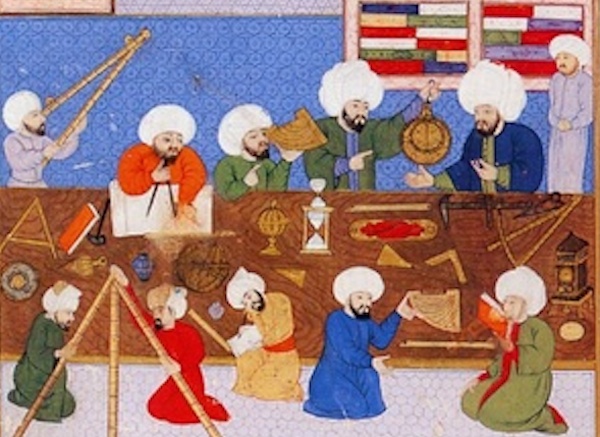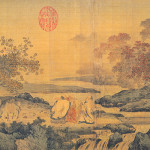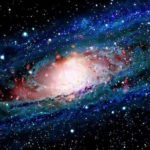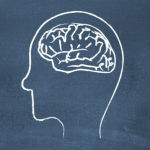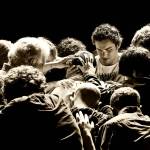The Stillbirth of Science in Arabia
by Dr. Stacy Trasancos
Filed under Christianity and Science
NOTE: Today we wrap up our weekly series of essays by Dr. Stacy Trasancos on the "stillbirths" of science. They're based on Fr. Stanley L. Jaki's research into the theological history of science in the ancient cultures of Egypt, China, India, Babylon, Greece, and Arabia. See past articles here.
The last culture to be examined is that of the Muslims. Although theirs was a monotheistic view, it was not a Christological or Trinitarian view, which left it vulnerable to a monotheism that approached pantheism. What happened in the Muslim world seems to be the result of a mixture of mindsets. The Arabian philosophers adopted the works of the Greeks, along with the organismic, eternal cosmic treadmill worldview. This meant that the philosophers’ worldview was in conflict with the Muslim religion since the Koran taught that God the Creator created the world and held it in existence. The stillbirth of Muslim science could be credited with a separation of science and religion that ought to have been reconciled, a point that would no doubt surprise many people today.
As Athens and Rome lost cultural significance around the early seventh century A.D., there was less communication between the two. Greek scholars moved toward the East and organized at Jundishapur in Southwest Persia. In 641 A.D., when Persia was conquered by the Muslims, the Middle East and North Africa came under one rule. By 711 A.D., the Arabs took Spain and twenty-one years later they stormed France. One hundred years after Muhammed’s death, a political unification of land that spanned three continents emerged. As the new religion codified in the Koran was imposed, a giant empire formed “steeped in the conviction that everything in life and in the cosmos depended on the sovereign will of a personal God, the Creator and Lord of all.” (Jaki, Science and Creation, p. 193)
The continual study of the Koran inspired intellectual curiosity among faithful Muslims, as did the meticulous scholarship of the Greek philosophical and scientific body of knowledge. So serious was the promotion of knowledge that “Houses of Wisdom” were erected, notably in Baghdad (813–833), Cairo (966), and Cordova (961–976). Cordova amassed over 300,000 volumes for the library and immediately attracted scholars from the Christian West, who were welcomed with hospitality.
A paper mill, learned from the Chinese art of paper-making, was constructed in Baghdad in 794, and extensive translation and reproduction of Greek literature flourished. The works of Galen, who was considered second only to Hippocrates in the medical hagiography of the Western World, were translated, some 130 of them, and dominated medical practice in the medieval East and the West well into the Renaissance. (Plinio, A History of Medicine: Roman Medicine, p. 315) The greatest figure of Arab medicine was produced from this school, al Razi (865–925), the author of A Treatise on the Small-Pox and Measles. His work has been reprinted more than forty times in the last four hundred years. Islamic medicine in general was outstanding, a field in which Islamic science demonstrated its most sustained vitality. The Muslims had a realistic sense for facts of observation.
The Islamic ophthalmologist, Ibn-Rushd (1126–1198), otherwise known as Averroes, provides a “priceless insight” into the ultimate failure of Islamic science. (Jaki, Science and Creation, p. 195) He was a resolute advocate and student of Aristotle’s philosophy and science, and as such broke new grounds with ophthalmology. The practice of medicine could flourish under Aristotelian teaching because it did not require any questioning of Aristotle’s view of the physics.
Likewise Ibn-Sina (980–1037), also known as Avicenna, the famed philosopher provides the same insight. His textbook served as the standard in Arab medical teaching, a fine collection of observation and systematic pathology. Muslim science made notable contributions in areas that had nothing to do with physical laws. When it came to a study of physical laws of the world, there was a certain inertia owed to the unwillingness to question the Aristotelian animistic worldview, which is why the study of biology advanced but without an underlying increase in the understanding of the physical world.
This lack of understanding of physics is evidenced by Arab alchemy, which came to stand for the study of materials and compounds. This field of investigation was a combination of mystical and astrological proclivities, fundamentally the result of mixing the organismic, eternal cycles of pantheism with the belief that a Creator created the universe. It was an attempt to reconcile the conflicting views of Aristotelian philosophy and Muslim theology.
The same paradox occurred in astrology. The astrologers, working with assumptions in conflict with their religion, gave credence to the pagan doctrine of the Great Year, even to the point of believing it could predict the succession of rulers, religions, reigns, and physical catastrophes. Yet devout Muslims could not accept these ideas that were in conflict with Muslim orthodoxy, which revealed that the universe had an absolute beginning with creation. As attempts were made to reconcile these beliefs, something ambiguous resulted, as evidenced in the writing of al-Biruni, a Muslim who refuted the contradictions among scholars and religious men in his famous work The Chronology of Ancient Nations:
"It is quite possible that the (celestial) bodies were scattered, not united at the time when the Creator designed and created them, they having these motions, by which–as calculation shows–they must meet each other in one point in such a time. It would be the same, as if we, e.g. supposed a circle, in different separate places of which we put living beings, of whom some move fast, others slowly, each of them, however, being carried on in equal motions–of its peculiar sort of motion–in equal times; further, suppose that we knew their distances and places at a certain time, and the measure of the distance over which each of them travels in one Nychthemoreon." (Athar-ul-Bakiya of Albiruni, The Chronology of Ancient Nations, p. 30)
He goes on in the work to give credit to the mathematical computations of the cycles to explain the appearances, an incongruity between mathematics and reality and a failure to go beyond the Aristotelian and Neoplatonian positions regarding the physical world. As far as the Muslim scholars advanced, they still did not provide the psychology that could give birth to modern science because they did not effectively refute the pantheism of the Greek scientific corpus (body).
That reconciliation would come from Christian scholars who, in adherence to the Christian Creed, rejected the teachings of the Greek scientific corpus which contradicted Christian dogma, particularly pantheism and the eternal cosmic cycle. Indeed, the birth of science can be credited as a successful reconciliation of the Christian religion and science.
"There had to come a birth, the birth of the only begotten Son of the Father as a man, to allow science to have its first viable birth." (Jaki, A Late Awakening, p.60)
This series of essays is adapted from the book Science Was Born of Christianity: The Teaching of Fr. Stanley L. Jaki (available on Amazon). In the book, this series is in the chapter "Was Born," which is preceded by an introduction to Fr. Jaki and a discussion about how he defined "science." This series is followed by a series of essays about "The Biblical Womb" and the attitudes towards Greek and Roman science in "Early Christianity." The birth of science in "The Christian West" is covered by a brief review of the following Christian scholars' contributions, in chronological order: Adelard of Bath, Thierry of Chartres, Robert Grosseteste, William of Auvergne, St. Albertus Magnus, St. Thomas Aquinas , Roger Bacon , Siger of Brabant , Étienne Tempier, and Jean Buridan.
Sources:
- Stanley L. Jaki, Science and Creation: From Eternal Cycles to an Oscillating Universe (Edinburgh: Scottish Academic Press, Ltd, 1986), 192-200.
- Stanley L. Jaki, A Late Awakening and Other Essays (Port Huron, MI: Real View Books, 2004), 22-25.
- Prioresch Plinio, A History of Medicine: Roman Medicine (Omaha, NE: Horatius Press, 1998), 315.
- Athar-ul-Bakiya of Albiruni, The Chronology of Ancient Nations: An English Version of the Arabic Text “Vestiges of the Past,” translated by D. Edward Sachau (London: W. H. Allen & Co., 1879), 30.
Related Posts
Note: Our goal is to cultivate serious and respectful dialogue. While it's OK to disagree—even encouraged!—any snarky, offensive, or off-topic comments will be deleted. Before commenting please read the Commenting Rules and Tips. If you're having trouble commenting, read the Commenting Instructions.




